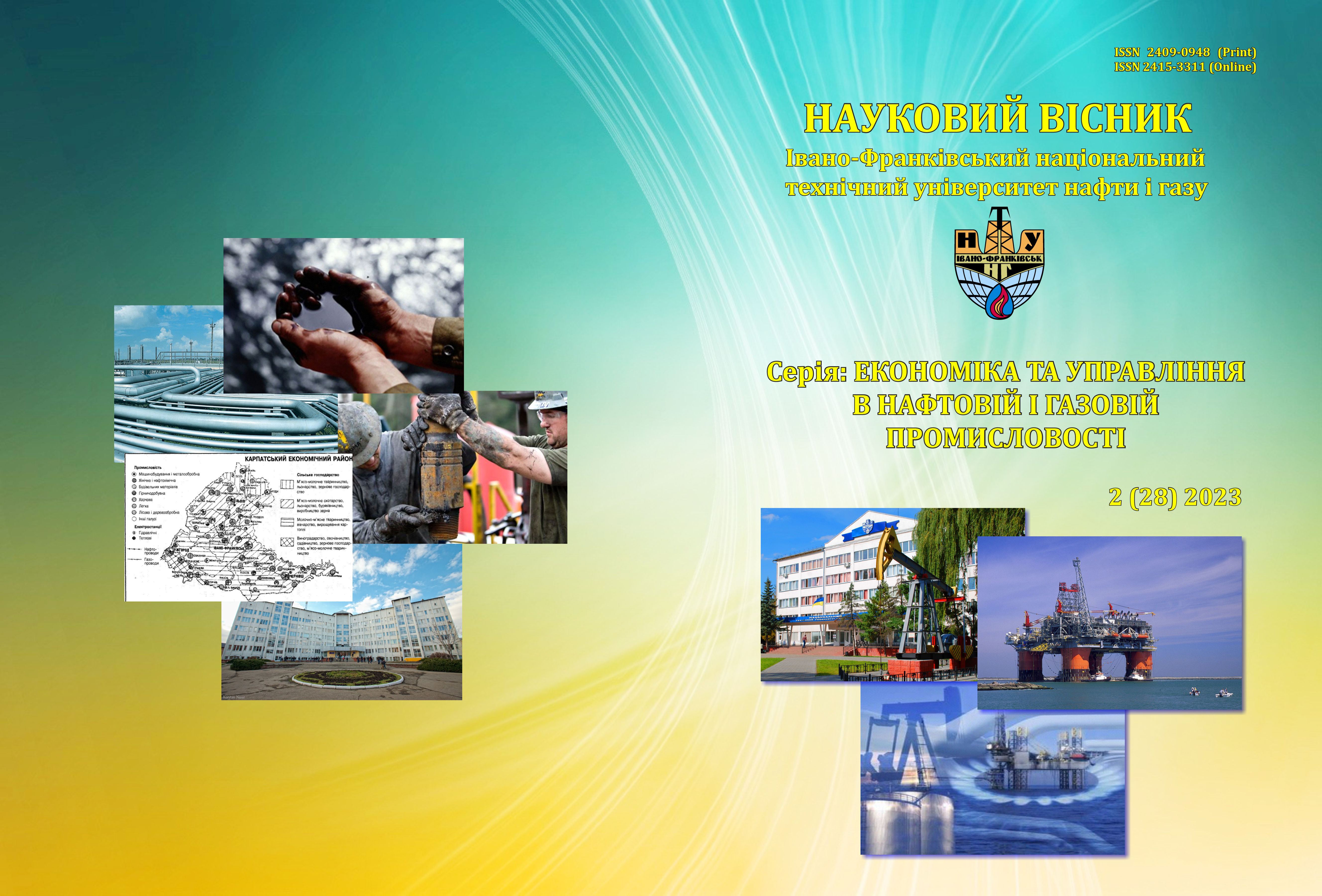RETAINING TALENT IN STARTUPS: FEATURES AND PRACTICAL TOOLS
DOI:
https://doi.org/10.31471/2409-0948-2023-2(28)-143-152Keywords:
startup, talent, talent management, leadership, company culture.Abstract
The article examines the factors that influence talent retention in a startup. The author's identification of problems, challenges and opportunities of startups in the field of talent management was previously carried out, which made it possible to come to the conclusion about the need to use flexible approaches to management in this direction.
To achieve the goal of the research, a focus group survey was conducted at the Ukrainian startup Lemon.io. using the author's questionnaire, which provides an assessment of the importance of talent retention factors in a startup with their preliminary division into eight categories. The obtained results of the survey made it possible, firstly, to determine the categories and factors that require priority managerial influence on talent retention from the side of the founders and managers of the startup, and secondly, to recommend the use of personally-oriented, team-wide and mixed approaches to talent retention, focusing on the assessment of the importance of factors , which influence the fact that talent remains working in the startup. It has been established that the policy of compensations and benefits, which is related to the material stimulation of talents, must be implemented with a focus on personal achievements, needs and opportunities of the employee, well-being, safety, and professional development of talents require mixed approaches, and activity in the field of leadership, corporate culture and organization of work - implementation of a uniform policy for all team members.
Taking into account the importance for the entire startup team of such talent retention factors as "work environment and culture", "leadership and management", as well as "flexibility and organization of work", a detailed description of their features and practical application was carried out. At the same time, the approaches and recommendations known in the world theory and practice were used, which confirm the relevance and timeliness of the application of talent retention tools in startups.
References
Global 500. (2023). URL: https://fortune.com/ranking/global500/
Blank S., Dorf B. (2020). The Startup Owner’s Manual: Step-By-Step Guide for Building a Great Company. Wiley. 608 p.
Shafer L. (2016). Deliberately Developmental. How workplaces can build success by unlocking the potential of every employee. URL: https://www.gse.harvard.edu/news/uk/16/04/deliberately-developmental
Nekrasov D. (2022). Koshtiv ne vystachaie, talanty tikaiut, ale ne vse tak pohano. Na chomu trymaietsia startap-ekosystema Ukrainy. URL: https://www.epravda.com.ua/publications/2022/01/20/681620/
Kharyi Ya. (2022). Ukrayinskyi fond startapov (UFS): okupiatsia li investitsiyi gosudarstva v startapy? URL: https://inventure.com.ua/analytics/formula/ukrainskij-fond-startapov-ufs:-okupyatsya-li-investicii-gosudarstva-v-startapy.
Krasavtsev B. (2022). USF continues to work to save and developed Ukraine’s startup. URL: https://ucluster.org/en/blog/2022/06/usf-countinues-to-work-to-save-ukraines-startupecosystem.
Dudko V. (2022). Natsiia startapiv? Mintsyfry khoche zalyty miliardamy IT-rynok, shchob Ukraina perestala buty «autsors-krainoiu». Naskilky realnyi tsei plan. URL: https://forbes.ua/inside/natsiya-startapiv-v-mintsifri-bachat-v-ukraini-minimum6000 startapiv-cherez-10 rokiv-yakiy-plan-13072022-7094.
Moss J. (2022). The Pandemic Changed Us. Now Companies Have to Change Too. URL: https://hbr.org/2022/07/the-pandemic-changed-us-now-companies-have-to-change-too.
Dvek K. (2017). Nalashtuisia na zminy. Nova psykholohiia uspikhu. K.: Nash format. 288 c.
Til P. (2015). Vid nulia do odynytsi. Notatky pro startapy, abo yak stvoryty maibutnie. K.: Nash format. 232 s.
Kondryn M. (2020). HR Atlas A Roadmap to Healthy Organisation for Start-ups, Small & Mid-Sized Businesses. URL: https://www.amazon.com/Atlas-Organisation-Start-ups-Mid-Sized-Businesses-ebook/dp/B08D8F4D65
Lalu F. (2017). Kompanii maibutnoho. Kh.: KSD. 544 s.
Pink D. (2023). Draiv. Dyvovyzhna pravda pro motyvatsiiu. K.: Laboratoriia. 208 s
Vatchev D. (2020). How to be in the 10%, when 90% of startups fail. URL: https://startupsmagazine.co.uk/article-how-be-10-when-90-startups-fail
Downloads
Published
How to Cite
Issue
Section
License
Copyright and Licensing Terms
Copyright Statement
The authors who publish in the journal accept the following conditions:
- The authors retain the copyright and grant the journal the right of first publication, licensed with Creative CommonsCC BY-NC-SA , which permits other people to remix, transform, and build upon the material and use the material for non-commercial purposes, give appropriate credit and distribute the contributions under the same license as the original.
- The authors can conclude additional agreements on the non-exclusive distribution of the journal’s published version of the work (for example, publication of the work in electronic repositories) with an acknowledgment of its initial publication in this journal.
- The authors can upload the published articles on the Internet (for example, in electronic repositories or on web-sites), as it will stimulate fruitful scholarly discussions and increase the citation rates of the published articles.


1.png)


1.png)





